Boxwood: Still Shape-Shifting After 350 Years
http://decor-ideas.org 06/10/2015 23:13 Decor Ideas
Boxwood, labeled the oldest garden ornamental by the American Boxwood Association, came to the U.S. in the mid-1600s, but it is hardly showing its age. The evergreen shrub has been called ubiquitous, traditional and formal — but rarely has it been called boring.
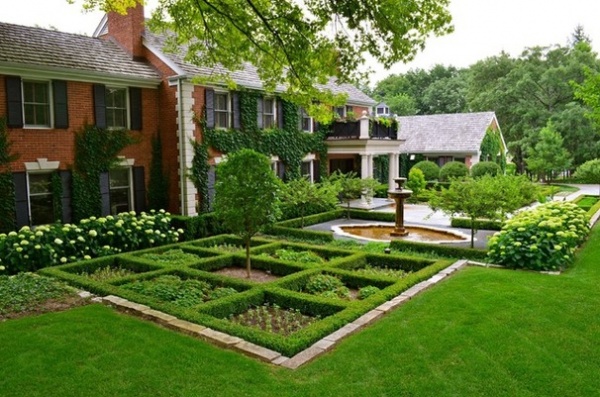
Landscape architect Katharine Webster says that boxwood (Buxus spp) was imported from Amsterdam to Shelter Island (on New York’s Long Island). Given the plant’s properties, it’s no wonder it has taken root in America. “It’s a fairly slow-growing evergreen bush, and there are over 200 varieties,” Webster says. “Long ago, people thought it had medicinal properties, and woodworkers and cabinetmakers considered it a hardy wood.”
According to the American Boxwood Association, the bush was most popular in the U.S. during the early 19th century and again in the early 20th century. “Victorians loved the stuff,” says Webster. “They were famous for planting it around bedding plants.”
You can see an echo of that practice (and see how the bush earned its popularity) in this suburban Chicago lawn by Doering Landscape. Boxwood can be sculpted to form distinct, verdant rows. For centuries, gardeners have been painstakingly molding it into simple and elaborate shapes. Here, the designers created a traditional parterre (a level garden filled with ornamental plants). The boxwood acts as a frame for rows of bedding plants and a fruit tree.
Read more about parterre gardens
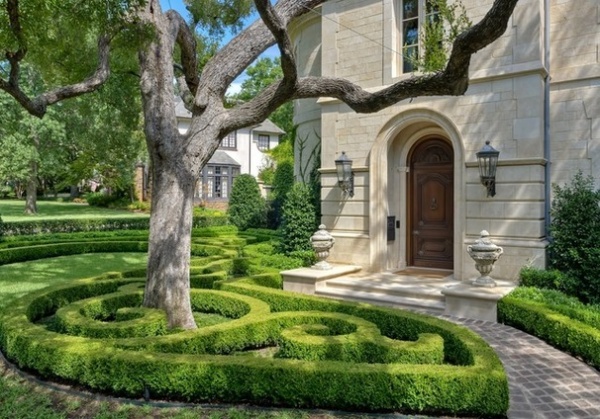
This garden, by Harold Leidner Landscape Architects, shows the more sinuous capabilities of the plant. Harold Leidner says that the curvy pattern was first laid out on paper and then imprinted on the dirt around this American elm tree. Wintergreen boxwood bushes were planted side by side, close enough to touch, allowing them to grow together quickly.
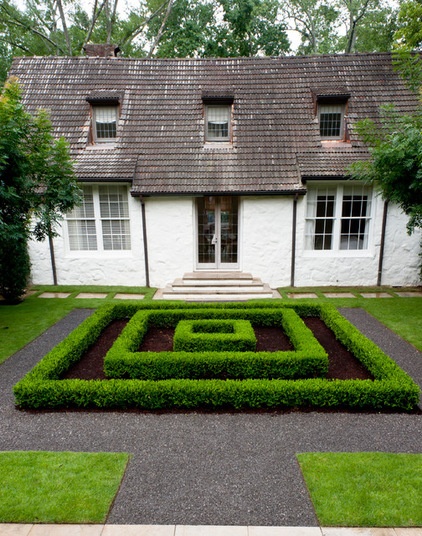
Leidner describes the plotting of elaborate design as painstaking. Webster says the word might also be apt for some boxwood maintenance. “There’s no doubt that it takes work,” she says. “I recommend that it be trimmed by hand, and never with electric shears. Those are too rough on the plant, and it cuts the leaves in an unattractive way and blunts the growth of it.”
Looking at this installation by Agricultural Services, you can just imagine the work that went into the seemingly perfect squares.
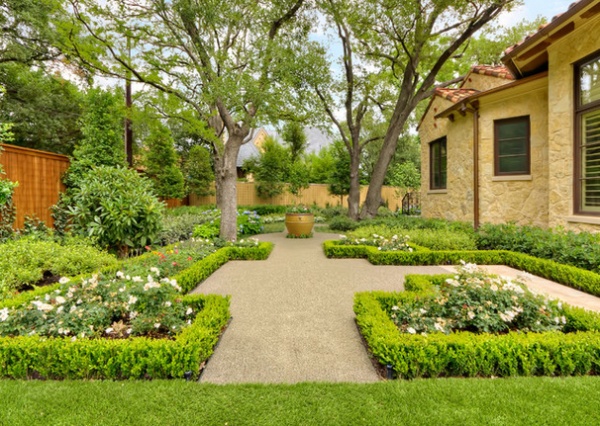
Leidner also used boxwood in the garden outside this Dallas home. He suggests that for low-growing boxwood rows that will be clipped, gardeners choose Wintergreen or Winter Gem varieties. Wintergreen boxwood is planted here.
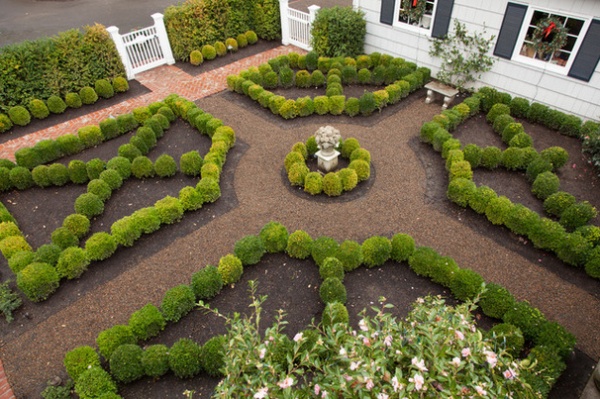
Leidner suggests that for boxwood rows that are trimmed into strict globe shapes or allowed to grow naturally in a rounded form, gardeners should choose varieties like Green Velvet.
Gretchen Johnson went for the globular look in her Oregon garden. “The boxwood garden gives structure to the space that lasts all year long and is very pleasing to my eye. I added the used-brick walkway, which I think is in keeping with our old-English-style home,” she says.
Read more about Johnson’s home
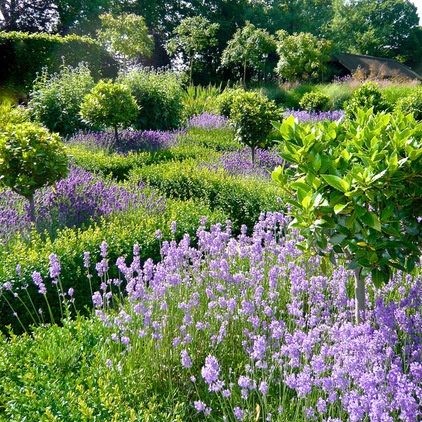
It’s those structural qualities that cause Webster to call the plant a great foil. “It’s like having a navy blazer — it goes with everything,” she says.
In this garden, by Joanne Alderson Design, adaptable boxwood frames exuberant beds of lavender and bay trees.
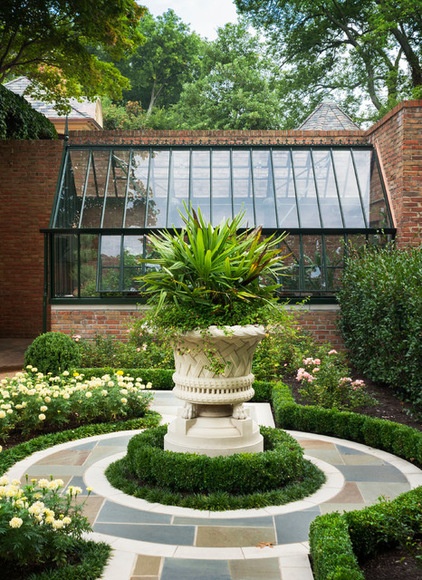
Webster also describes boxwood as a strong support. “It can be a great frame for other plants and sculptural elements. It’s like the big brother who makes every situation better.”
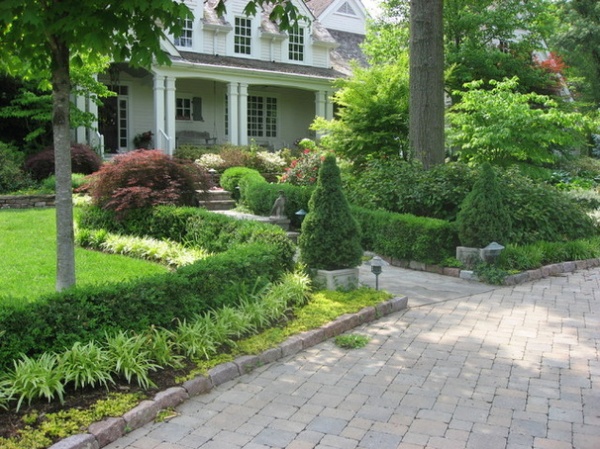
That’s not to say boxwood doesn’t have a wilder side. “There are many modern applications where people are letting it grow a little wilder and bushier,” says Webster. “In that state it can make a strong border, but it can also be a background.”
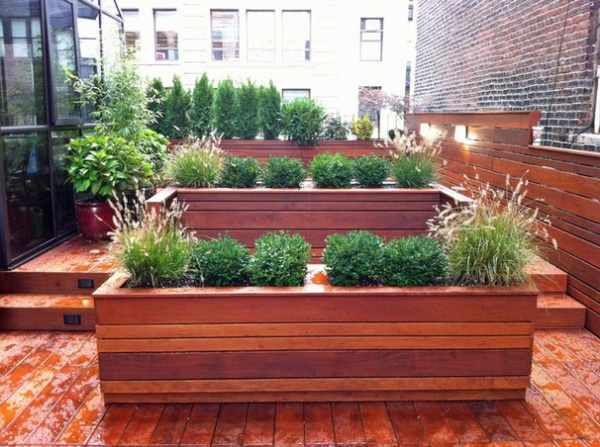
Webster points out that in many modern applications, such as in this New York City roof garden by Amber Freda, boxwood can even stand alone.
“It’s a really versatile plant,” Webster says. “I think that’s why they are so loved and part of so many gardens’ vocabularies.”
Are you growing a box or hedge of boxwood? We’d love to see a picture in the Comments below!
More:
Touches of Grandness for the Garden
Read more about the properties of boxwood
Related Articles Recommended












